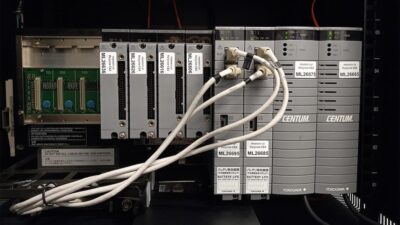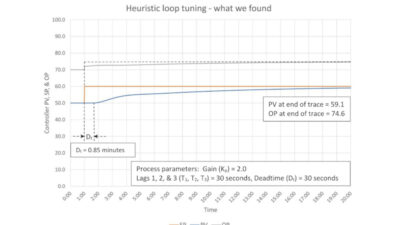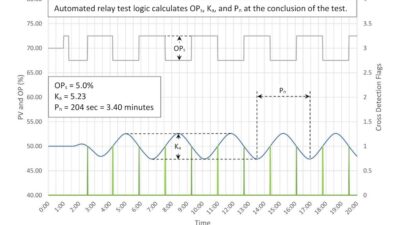A healthy multivariable advanced process control (APC) layer should be a core-competency of the process industries.

Learning Objectives
- Get a working concept of multivariable control.
- Understand the difference between manual versus automatic multivariable control.
- Find the path to core-competency with multivariable control.
A core-competency is a skill set, mastery of which is essential to success in your business. For example, it is accepted establishing and sustaining a healthy base-layer process control (BPC) system is a core-competency of the process industries.
A healthy multivariable advanced process control (APC) layer is also a core-competency of the process industries – or should be. That may sound like a tall order due to the historic struggle the process industry has already waged trying to master conventional model-based multivariable control technology. However, by taking stock of the lessons learned, and taking a fresh look at the conventional APC paradigm, seeing how and why multivariable control must evolve into a core-competency is a lot clearer.
Working concept of multivariable control
Chief among the lessons learned is the need for of a more accessible working concept of multivariable control and its existential role in process operation. A shared working concept of multivariable control is essential in order to make multivariable control, as a tool that can automate and optimize many aspects of process operation, more accessible to on-site operation stakeholders, such as process engineers, operating staff, and managers. In the past, multivariable control has usually remained in the hands of APC specialists and was mostly a black box to the on-site operating team. A more accessible working concept means the local operating team can more efficiently identify, deploy, operate, maintain and participate in multivariable control applications – with local ownership skills and a shared working knowledge of the technology being key aspects of a core-competency.
Just as a single-loop controller automates the job of making frequent valve output adjustments that are otherwise left to operators to make manually, a multivariable controller automates the job of making frequent single-loop controller setpoint adjustments.
This is how any multivariable controller, regardless of the technology employed (model-based or model-less), touches the process. It is the easiest way to understand the actual role of multivariable control in process operation – it automates the job of making setpoint adjustments to groups of inter-related controllers, for purposes of closed-loop constraint control and optimization.
The qualitative benefits of automatic multivariable control can also be understood as fundamentally the same as single-loop control – more timeliness and consistency, fewer alarms and constraint violations, and greater optimization. These benefits range from the inherent performance benefits of closed-loop control over open-loop, to significant operational and economic improvements, to large-scale benefits associated with conventional large-matrix multivariable controller applications.
Manual versus automatic multivariable control
When operators make setpoint and output adjustments to groups of related controllers, that’s manual multivariable control. When a multivariable controller is applied to automate these adjustments, that’s automatic (or closed-loop) multivariable control. Making frequent adjustments to sets of related controllers is an inherent aspect of almost every process operation. A more informative way of looking at processes is not whether they have multivariable control or not, but whether it is manual or automatic. This is the same way the process industry views base-layer control health – how many controllers are in automatic versus manual mode.
The lack of a healthy multivariable APC layer is the equivalent to having excessive base-layer loops in manual mode highlights the need to address the lack of manual multivariable control because the battle of gaining widespread shared operating team agreement on the fundamental importance of closed-loop control over open-loop control was won long ago.
For example, many operating sites today uses some form of the controllers-in-manual key performance indicator (KPI) to measure and manage BPC health. The process industry lacks a similar metric to measure and manage APC health, but alternatives are available for adoption, such as loop intervention or bad actor loop metric (see industry’s missing metric).
Wherever operators are frequently observed to be busy making controller adjustments, or where operating conditions are often observed in a sub-optimal state is an opportunity for automatic multivariable control.
Process operation engineers, who are often the main “boots on the ground” when it comes to overall responsibility for process optimization, in particular tend to observe these conditions on a regular basis and would often “trade their kingdom” for a more effective solution than frequent follow-up (or “badgering”) of operations. Multivariable control as a core-competency offers a solution.
Path to core-competency: Multivariable control
Another key lesson is model-based control and real-time optimization are not strictly required components of multivariable control. They are part of the way conventional APC technology solves the multivariable control problem. However, there are other ways to do automated closed-loop multivariable control that are less complex and more readily mastered.
For example, users can see operating teams are routinely engaged in manual multivariable control – and do so without detailed models or real-time optimizers. This reveals an alternative path to multivariable control by automating the methods traditionally employed by operating teams to effect constraint management and optimization manually (Figure 1).
This takes a time-proven approach to multivariable process operation and adds the benefits of automation – real-time closed loop performance, built-in expertise and consistency and corresponding process performance improvements (see What is XMC?)
Allan G. Kern, P.E., is owner and consultant at APC Performance LLC. Edited by Mark T. Hoske, content manager, Control Engineering, CFE Media and Technology, [email protected].
KEYWORDS: Advanced process control, multivariable control
CONSIDER THIS
Are you taking advantage of multivariable control for critical processes?




